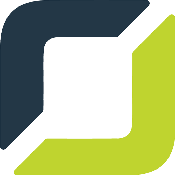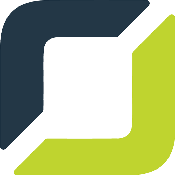Database migration refers to the movement of data from one database to another. There are many reasons why an enterprise may choose to migrate from an existing database, such as to achieve scalability, save money, enhance reliability or meet another important objective. Although database migration can provide growing businesses with countless benefits, the process can range from simple to complex.
Some forms of database migration simply involve moving data from one database instance to another of the same type. For example, a business may transfer data on a MySQL database on one server to another MySQL database on a different server. More complex forms may include multiple types of databases. For example, an enterprise may want to move data from a MySQL database to Cassandra.
Before starting the process of database migration, it is important to fully understand what it is and what the process entails.
What Exactly Is Database Migration?
 Database migration is a common tool used by businesses to move data between two or multiple types of storage. These transfers may take place between different computer formats or systems to achieve greater efficiency, organization and cost-effectiveness. Database migration generally involves several iterations and phases that must be carefully assessed based on the unique needs of the business.
Database migration is a common tool used by businesses to move data between two or multiple types of storage. These transfers may take place between different computer formats or systems to achieve greater efficiency, organization and cost-effectiveness. Database migration generally involves several iterations and phases that must be carefully assessed based on the unique needs of the business.
The data migration process can be completed in a number of different ways. The most common types of data migration include:
- Storage Migration — This type of data migration involves moving physical blocks of data from one type of hardware to another type of hardware.
- Application Migration — All applications operate using a particular data model, making transformation a must if an application vendor must be modified.
- Data Migration — Data migration refers to the movement of an entire database from one vendor to another vendor. It can also refer to the process of upgrading the current software being used for a particular database.
- Business Process Migration — This type of data migration refers to the upgrade or replacement of business management tools. This process often occurs after a merger or acquisition has taken place and data must be transferred from a business, application or database.
Why Do Businesses Use Database Migration?
The competitive nature of the modern business world has made it necessary for organizations to quickly adopt new technologies. The right technologies can improve performance, speed up operations and help companies achieve expedited growth. Here is a look at some of the reasons why businesses choose to undergo database migration.
1. Cut Costs
The use of old or outdated databases can add unnecessary expenses to company overhead. In some cases, moving a database to a platform that will better serve their purpose in a more efficient manner can be a cost-effective decision that has both short-term and long-term benefits. Database migration can help businesses save on infrastructure expenses, as well as the expertise and employees needed to support it.
2. Adopt New Technology
Businesses are always struggling to keep up with technological changes. Making the shift from an outdated or legacy system to one that is designed specifically to meet the modern needs of a business can be a wise decision. In fact, this decision is often a necessary one for businesses that wish to remain competitive and meet their growing data storage needs.
3. Decrease Redundancy
Using old or outdated database systems can often lead to an increase in human errors and syncing mistakes. Many businesses also find that when data is not stored in a central location, it can become redundant. Data migration is an effective way for companies to transport important data to a single place while minimizing redundant data. When data is stored in one place, it can be easily accessed by all departments.

4. Ward Off Attacks
Databases are highly susceptible to cyber attacks, especially those that have not been upgraded in recent years. These attacks occur when hackers enter through networks due to security gaps. Once inside, they can steal or reveal sensitive information, putting the business at risk for lawsuits and other liabilities. Database migration helps ensure that the database receives regular updates to keep hackers at bay.
What Happens During Database Migration?
Database migration is a multi-step process that begins with assessing the source system and completes at the testing and replication phases. Before starting database migration, it is critical for businesses to develop a database migration strategy that aligns with their goals and available resources. Having access to the right data migration tools can also help make the migration process more effective.
Here is a look at the main steps involved in database migration:
Understand the Source Database
Start by gaining a solid understanding of the source data that will be used to populate the target database. While reviewing source data, consider the size of the database. How long it takes to complete the migration will depend on several factors, such as the size and complexity of the database and the amount of time and resources needed to complete the transfer.
Also, see what types of databases will be involved and consider if schema conversion capabilities are needed for a successful migration. Finally, determine if the database has extensive tables as a tool may be needed to load the data in parallel.
Conduct a Data Assessment
The next step involves profiling the source data and establishing data quality guidelines to help minimize the presence of duplicate values, inconsistencies and incorrect information. Conducting a data assessment early on in the process can help businesses reduce the risk of going over budget, costly delays and system failures. Having data quality guidelines can also be useful for validating data and improving the quality and overall accuracy of the database migration.
Leverage Data Migration Tools
Heterogeneous migrations are often more complex than their homogenous counterparts as they involve migrating data between various database engines. Schemas for heterogeneous database migrations can often be converted manually but the process is highly time-consuming and requires extensive resources. Using a data migration tool that contains schema migration conversion capabilities can make the process run more smoothly as data is migrated to a new database.
Test the Database Migration Build
When testing a migration build, it is best to start with just a small subset of the data instead of running a complete migration test all at once. Profile and convert the small subset of data before converting its schema. This testing strategy helps ensure that all transformations, mappings and data quality rules are operating correctly and efficiently. If the subset of data is tested and everything goes smoothly, the data volume can be gradually increased to build a central migration workflow.
Completing the Database Migration
It is important to plan a database migration project at a time when the business can afford to experience some downtime, such as at night, on the weekend or on a closed holiday. The goal is to avoid as much interruption to normal business operations as possible. There are several ways that this can be achieved, such as through the use of database migration tools that offer Change Data Capture (CDC) or data synchronization capabilities. After migrating the data to the new database, develop a policy to retire the old database.
How Long Does Database Migration Take?
The cost of database migration can vary significantly based on a wide range of factors. One of the biggest influential factors pertains to the amount of data that is being transferred. The more data that a business has to transfer, the longer the migration will take.
The way that the data is being transferred also impacts how long it takes to migrate successfully. For example, if the data is being transferred over a network, consider how much bandwidth the connection will support. If the data is being copied directly from one disk to another disk, look at the read and write I/O of the disks to get an idea of how long the migration will take.
Other factors that can affect the length of time include how much data transformation is needed, and how efficient the business’s processes are for performing data transformations. The more transformation that a business has to complete, the more they have to engage in manual processes for transforming data. This can ultimately slow down the migration process.
What Problems Could Businesses Run Into?
 Database migration can be a highly complex task and businesses are bound to run into the occasional problem. One common problem that organizations encounter during the migration process relates to the identification of databases stored at different locations. Over time, it is common for businesses to house data in different databases within an organization. During migration, businesses must identify the location of these databases and determine the best way to convert the schemas.
Database migration can be a highly complex task and businesses are bound to run into the occasional problem. One common problem that organizations encounter during the migration process relates to the identification of databases stored at different locations. Over time, it is common for businesses to house data in different databases within an organization. During migration, businesses must identify the location of these databases and determine the best way to convert the schemas.
Another problem that a business may face during migration involves the cleaning and coding of data. Some organizations may have data that is stored in different formats that come from various sources. This data must first be normalized, cleansed or transformed to allow it to be analyzed together with data from other sources. A lack of collaboration can also result in problems during a database migration. When employees do not work in the same location or more data silos are created, it can cause confusion that impacts the project.
Speak with a Custom Software Development Company
Due to the complexity of the database migration process, many businesses reach out to trusted professionals to assist with the migration. To learn more about database migration or to schedule a consultation with an experienced software development professional, contact Orases online today.






